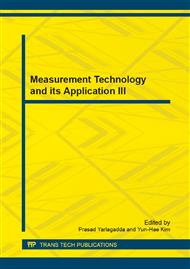p.685
p.691
p.696
p.701
p.705
p.710
p.716
p.721
p.726
View-Invariant Gait Recognition Based on Head and Shoulder Shape Analysis
Abstract:
To improve the recognition rate and resolve the view problem in gait analysis, a view-invariant method is presented. This method extracts the mean shape of the head and shoulder models in a gait cycle by using the Procrustes Shape Analysis (PSA) algorithm. Then, the mean shape is converted from 2-D space to 1-D space by unfolding the 2D mean shape from the top point of the head. Furthermore, the piecewise approximation (PA) of the unfolded mean shape is segmented corresponding to the average distance value. The obtained PA is adopted for estimating views and recognizing the gait. Finally, the presented method is conducted on the CASIA B database. The results illustrate that the PA is a powerful discriminative feature for view estimation and gait recognition, and the performance has been improved when there is view variation.
Info:
Periodical:
Pages:
705-709
Citation:
Online since:
June 2014
Authors:
Price:
Сopyright:
© 2014 Trans Tech Publications Ltd. All Rights Reserved
Share:
Citation:


